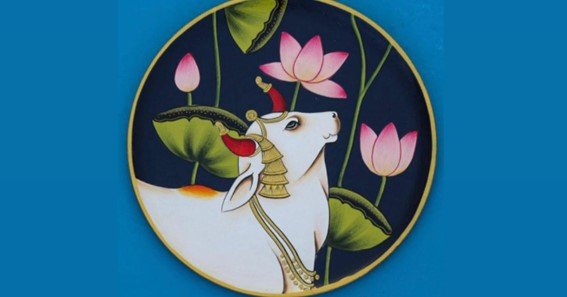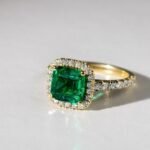Are you curious to know what is pichwai painting? You have come to the right place as I am going to tell you everything about pichwai painting in a very simple explanation. Without further discussion let’s begin to know what is pichwai painting?
Immersed in the rich tapestry of Indian art and culture is the captivating art form known as Pichwai painting. Originating from the temple town of Nathdwara in Rajasthan, Pichwai paintings are exquisite works of art that depict the divine tales of Lord Krishna, primarily inspired by the Pushti Marg sect. In this blog, we will delve into the intricacies of Pichwai painting, its historical significance, techniques employed, and the enduring legacy it continues to create.
What Is Pichwai Painting?
Pichwai painting is a traditional art form that dates back several centuries. The word “Pichwai” is derived from the Sanskrit words “pich” (back) and “wai” (hanging). These paintings were initially created as large backdrops or decorative hangings behind the main deity in temples, particularly in the Krishna temples of Nathdwara.
Themes And Symbolism
The central theme of Pichwai paintings revolves around Lord Krishna, portraying various aspects of his life, leelas (divine play), and festivals associated with him, particularly the raas leela. The intricate artwork captures the devotion, spirituality, and the eternal love between Krishna and his devotees.
Symbolism plays a vital role in Pichwai paintings. Every element, color, and motif used in the artwork carries symbolic significance. The peacock, lotus, cow, and Krishna’s iconic blue complexion are commonly depicted, each representing specific attributes and stories associated with Lord Krishna.
Techniques And Materials
Pichwai paintings are predominantly created using natural pigments derived from minerals, plants, and precious stones. The artists employ a combination of traditional techniques such as hand grinding pigments, using natural dyes, and intricate brushwork to achieve the desired effect.
The artists, known as Pichwai painters, often come from families with a long lineage of expertise in this art form. They meticulously hand paint on cloth or paper, carefully blending colors and adding intricate details to create a mesmerizing visual narrative.
Historical Significance And Devotional Connection
Pichwai painting has deep roots in the devotional practices of the Pushti Marg sect, founded by Shri Vallabhacharya. The paintings serve as a form of seva (devotional service) to the deities, intensifying the bhakti (devotion) of the devotees.
The art form holds immense historical and cultural significance. Pichwai paintings are not merely decorative; they play an integral role in temple rituals, especially during festivals like Janmashtami and Annakut, when the paintings are changed to depict specific narratives and moods.
Preserving And Revitalizing Pichwai Painting
In recent years, there has been a renewed interest in Pichwai painting, both in India and internationally. Efforts are being made to preserve and revitalize this traditional art form by supporting the artists, promoting exhibitions, and creating awareness about its cultural importance.
Contemporary artists are also exploring innovative ways to incorporate Pichwai elements into modern art forms, bridging the gap between tradition and contemporary aesthetics. This fusion of styles not only attracts a wider audience but also ensures the continued relevance and evolution of Pichwai painting.
Conclusion
Pichwai painting is a magnificent art form that seamlessly combines devotion, spirituality, and artistic brilliance. Through its intricate brushwork, vibrant colors, and deep-rooted symbolism, it transports viewers into the enchanting world of Lord Krishna’s leelas and the divine realm.
As Pichwai painting continues to flourish, it serves as a testament to the enduring power of art to connect people with their cultural heritage and evoke profound emotions. Its beauty, craftsmanship, and spiritual resonance make it a cherished form of artistic expression that continues to captivate art enthusiasts and devotees alike, ensuring that the legacy of Pichwai painting lives on for generations to come.
FAQ
What Is The Meaning Of Pichwai Painting?
that which hangs from the back
Pichhwai (also pichwai, pichhavai, pichhvai, pechhavai etc), literally meaning ‘that which hangs from the back’ from the Sanskrit words “Pichh” means back and “wais” means hanging, are large devotional Hindu painted pictures, normally on cloth, which portray Krishna.
Where Is The Pichwai Art Famous?
Pichwai paintings also known as “Pichvai” is a traditional Indian art having its origins in Rajasthan, India.
How Are Pichwai Paintings Made?
Originally Pichwai was painted on the handspun starched cotton fabric. The artisans would then sketch the art on that starched cloth. Then the decorative and beautiful images were created. The images were then ready to be painted with completely organic and natural colors, paints and even natural brushes.
How To Identify Pichwai Paintings?
Pichwai paintings depict the life of Lord Krishna and his festivals such as Janmashtami, Sharad Purnima, Raas Leela, and Diwali, among others. The defining characteristic of Pichwai art is the distinct style for portraying human figures. They have pointed noses, big eyes, and a substantial physique.
I Have Covered All The Following Queries And Topics In The Above Article
What Is Pichwai Painting
Where Is Pichwai Art Famous?
What Is Pichwai Painting Called
What Is Pichwai Painting Krishna
Pichwai Painting Technique
Antique Pichwai Paintings For Sale
What Is Pichwai Painting
What is the Pichwai painting based on
What is pichwai painting?






